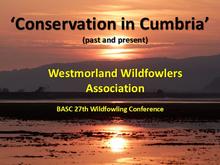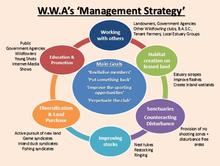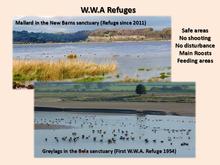WWA speak at the 27th BASC National Wildfowling Conference
Your Chairman Mark Shaw and Secretary Andy Stott represented the W.W.A. by attending the 27th BASC National Wildfowling Conference on the 28th March 2015 at the Ramada Hotel, Sutton Coldfield. The W.W.A. had been invited by BASC to give a talk on our conservation work and so our Secretary gave a 30 minute presentation to over 40 wildfowling clubs and BASC staff on the day. Yet another first for our club. Some excellent feedback from fellow wildfowlers was received after the talk.
Conservation in Cumbria
Conservation in Cumbria
‘Grass roots’ conservation has been a fundamental part of the Westmorland Wildfowlers Association since the clubs formation back in 1950. Our clubs founder members were key players in securing much of what we have today, and, 65 years on, we owe it to them & future generations to perpetuate the activities of the W.W.A.
Like all U.K clubs, the modern day W.W.A. faces the ever increasing challenges from regulators & conservation legislation, but having club officers with a positive outlook and a determination to succeed, has ensured the club is already in a better position to defend wildfowling on the River Kent estuary well into the 21st century.
Our conservation portfolio has undoubtedly been the ‘ace up our sleeve’ when demonstrating our activities to the regulators and to those who have little knowledge of wildfowlers and wildfowling. Having an active conservation strategy has helped the club forge better links with our local conservation groups, as well as the local landowners and tenant farmers. Conservation really does open doors to new areas.
This presentation focuses on the conservation work of the W.W.A. since 2009, highlighting several major areas that we have developed in order to benefit the sporting opportunities for members as well as raising the clubs profile and its overall image. “Putting something back” is really what it’s all about, and so the talk will focus on six key areas that the club regards as being important:- 1) Working with others, 2) Creating new wetland habitat, 3) Tackling disturbance and creating refuges, 4) Ways of improving wild stocks with artificial nests 5) Looking into club opportunities by diversifying and purchasing of land and lastly 6) Getting the message out there by actively promoting wildfowling and conservation.









